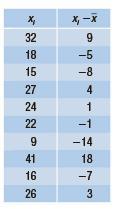Use these data from Example 2 about the number of boxes purchased and the price per contact
Question:
Use these data from Example 2 about the number of boxes purchased and the price per contact lens to answer a through g below. (1, 6.00), (2, 5.90), (4, 5.40) (8, 5.20), (10, 4.80), (12, 4.10), (14, 3.80), (16, 3.10), (20, 2.50) (24, 1.70)
 a. Find the linear regression equation. Round the slope and the y-intercept to the nearest hundredth.b. What is the slope of the linear regression line?
a. Find the linear regression equation. Round the slope and the y-intercept to the nearest hundredth.b. What is the slope of the linear regression line?
c. What are the units of the slope when it is expressed as a rate?
d. Based on the linear regression equation, what would be the price per lens if he bought 22 boxes? Round to the nearest cent.
e. Is your answer to part d interpolation or extrapolation? Explain.
f. Find the correlation coefficient to the nearest hundredth.
g. Describe the correlation.
Example 2
Maria, a Video Production Club member, noticed the range seemed to “ignore” all the numbers except the highest and lowest. She thought a better measure of dispersion would be to take an average of how far each number is from the mean.
How far, on average, is each entry in the data set from Example 1 from the mean of the distribution?
Step by Step Answer:

Financial Algebra Advanced Algebra With Financial Applications
ISBN: 9781337271790
2nd Edition
Authors: Robert Gerver, Richard J. Sgroi





